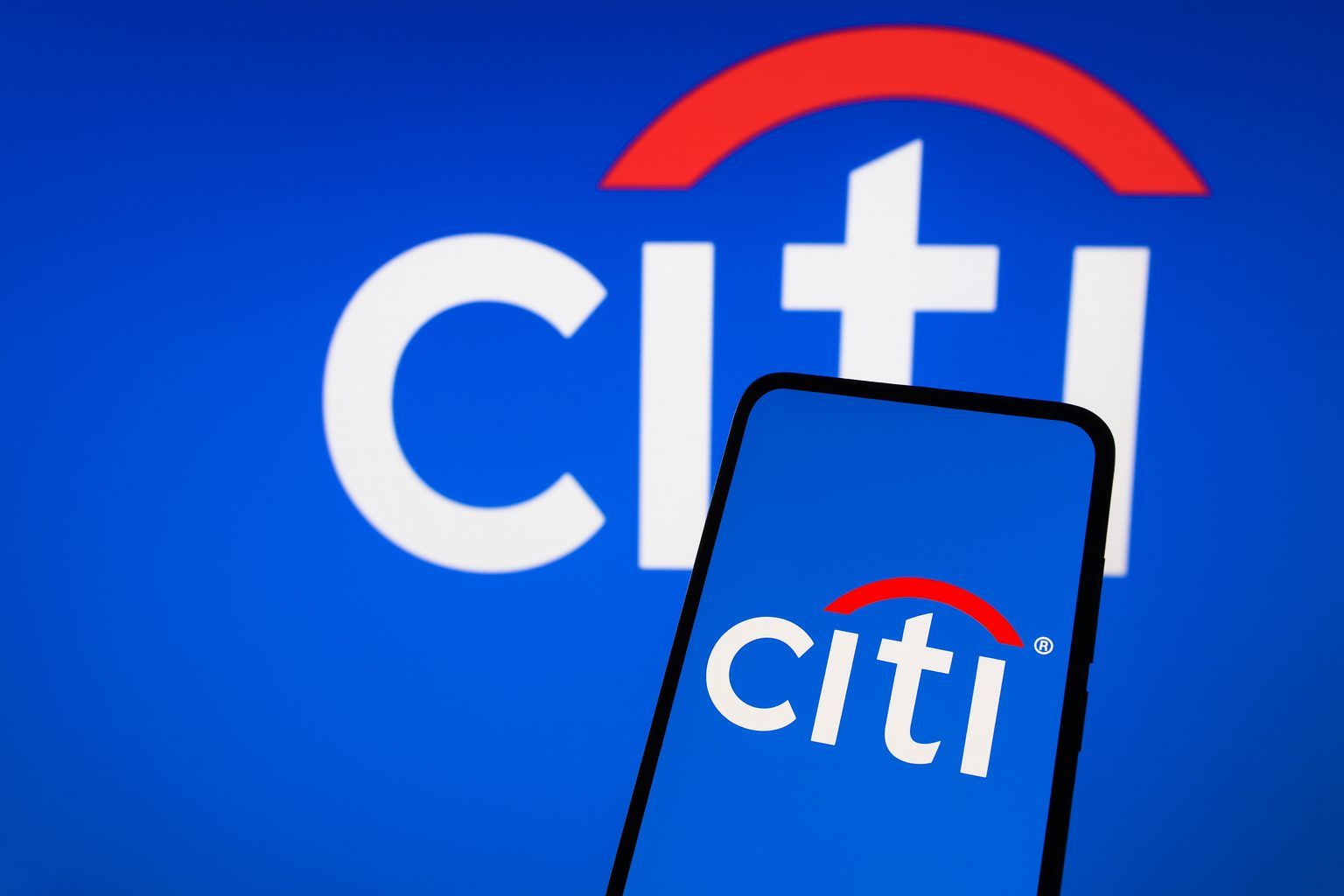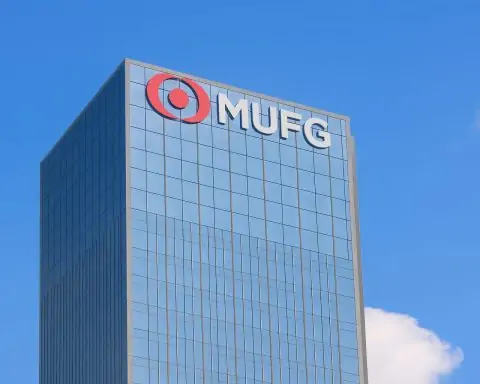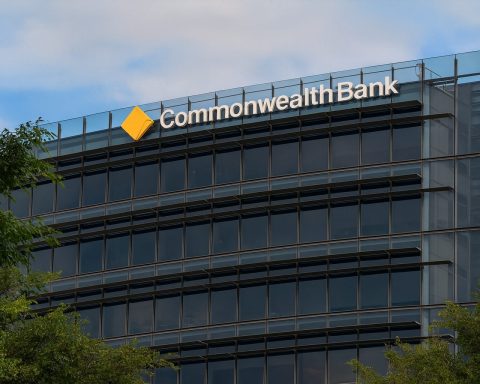Citigroup Inc. (NYSE: C) heads into Wednesday, 26 November 2025, with investors focused on three things: a cash dividend landing in shareholder accounts today, a major CFO transition with a restructuring of the U.S. consumer franchise, and a still‑bullish Wall Street view after a strong year for the stock.
Citigroup stock snapshot heading into 26 November 2025
As of Tuesday’s close (25 November 2025), Citigroup shares traded around $101.17, up roughly 1.5% on the day, after moving between about $99.42 and $101.73 on volume just under 11 million shares. [1]
That move extended what has been a powerful year for Citi:
- Citi’s shares are up around 40%+ year to date, having already risen about 42% in 2025 by mid‑October, outpacing big‑bank rivals JPMorgan and Wells Fargo. [2]
- Over the past couple of weeks, trading has been choppy: one recent technical read noted that despite Monday’s bounce, the stock is still modestly lower over the last two weeks, reflecting consolidation after a strong run. [3]
With the U.S. market set to trade today, investors are effectively starting from that ~$101 base — but today’s story is less about short‑term ticks and more about cash hitting accounts and Citi’s strategic reshuffle.
Dividend payment hits accounts today
Today, 26 November 2025, Citigroup is paying its regular quarterly common dividend of $0.60 per share to shareholders.
Key details:
- Dividend amount: $0.60 per common share
- Record date: 3 November 2025
- Payment date: 26 November 2025 (today)
- Ex‑dividend date: 31 October 2025 (one business day before the record date under T+1 settlement) [4]
Citigroup’s board approved this payout in an October 13 press release, which confirmed the $0.60 dividend and today’s payment date. [5]
What this dividend means in numbers
- At a share price around $101, Citi’s annualized common dividend of $2.40 per share (four quarters at $0.60) equates to a forward yield of roughly 2.3–2.4%. [6]
- Based on public dividend trackers, 2025 common dividends total about $2.32–$2.40 per share, reflecting an increase from earlier quarters in which Citi paid $0.56 per share before lifting the payout to $0.60. [7]
For income‑oriented investors, today’s payment reinforces Citi’s narrative of steady capital return alongside its restructuring. Several analytics sites also highlight that Citi has now increased its dividend for multiple consecutive years, a point often seen as a positive signal on management’s confidence in earnings power. [8]
Importantly, because the stock already traded ex‑dividend at the end of October, today’s cash landing in accounts does not change eligibility — it’s a settlement of a decision the market has been pricing in for weeks. Still, having a tangible cash return appear on the same day investors are weighing bigger strategic changes creates a neat backdrop for the stock.
CFO transition and U.S. personal‑banking overhaul: still the main story
The most consequential recent news for Citi shareholders did not drop today, but it’s very much shaping sentiment on 26 November.
On 20 November 2025, Citigroup announced that long‑time Chief Financial Officer Mark Mason will step down from the CFO role in March 2026. He will become Executive Vice Chair and Senior Executive Advisor to CEO and Chair Jane Fraser until leaving the bank by the end of 2026. [9]
Citi named Gonzalo Luchetti, currently head of U.S. personal banking, as the next CFO, with the hand‑off set to occur after the filing of Citi’s 2025 year‑end results. [10]
Structural shake‑up in U.S. consumer business
At the same time, Citi is re‑wiring its U.S. consumer franchise:
- Retail banking + Citigold move into Wealth:
Everyday banking, Citi Priority, Citigold and Citigold Private Client in the U.S. will sit inside Citi’s Wealth unit. This combined business will be led by Kate Luft, reporting to wealth chief Andy Sieg. [11] - U.S. Consumer Cards becomes a standalone core business:
Citi will merge Branded Cards and Retail Services into a new U.S. Consumer Cards division, led by Pam Habner, who joins Citi’s executive management team and reports directly to Fraser. [12] - Citi’s U.S. retail footprint — roughly 650 branches in six major metro areas — will now be more tightly aligned with wealth management rather than run as a separate mass‑market retail bank, reflecting its smaller scale versus mega‑branch rivals. [13]
Citi says the changes are meant to:
- strengthen its position across affluent and emerging‑wealth clients,
- simplify decision‑making on deposits, branch footprint and digital investment, and
- support its 2026 return‑on‑tangible‑equity (ROTCE) targets. [14]
How markets reacted
The CFO news initially caught analysts off guard. Reuters reported that some research houses viewed Mason’s exit as a surprise given his central role in explaining Citi’s turnaround strategy to investors, and one prominent bank analyst warned the reshuffle might not help the stock into year‑end. [15]
Nevertheless, the market’s response has been measured rather than panicked:
- Citi stock dipped on the day after the announcement, but the broader 2025 rally remains intact, with shares still up sharply year‑to‑date. [16]
- Follow‑up coverage in the Financial Times, Barron’s and others framed the move as part of Fraser’s ongoing transformation — one that includes cost cuts, job reductions and a sharper focus on wealth, cards and institutional services. [17]
For investors watching today, the CFO transition is still the main medium‑term risk and opportunity to think about, even as the dividend headlines dominate the calendar.
Earnings momentum and transformation backdrop
Underneath the leadership headlines, Citi’s fundamental performance has been steadily improving.
In third‑quarter 2025, Citigroup:
- Beat analyst estimates for profit, with net income up about 16% year‑on‑year despite taking a sizeable loss on the partial sale of its Mexican Banamex unit. [18]
- Delivered record revenue across its divisions, with particularly strong growth in banking fees as dealmaking and capital markets activity rebounded. [19]
- Reported a return on tangible common equity (ROTCE) of 8.6%, or 9.7% excluding the Banamex‑related hit — still below its 10–11% 2026 target but moving in the right direction. [20]
Management has repeatedly linked these results to Citi’s multi‑year simplification and “transformation” program, which includes:
- exiting non‑core international consumer markets,
- investing heavily in risk and control infrastructure to address past regulatory orders, and
- shifting more capital toward higher‑return institutional and wealth businesses. [21]
Citi’s next major checkpoint is its Investor Day on 7 May 2026, when Fraser and the incoming CFO are expected to update medium‑term targets and capital plans. [22]
For today’s trading, this backdrop matters because it helps investors interpret the CFO transition: is it a disruption, or the next step in locking in those targeted returns?
Analyst sentiment: still tilted bullish
Despite the management shuffle, Wall Street remains generally positive on Citigroup stock:
- A widely followed aggregation of 15 analysts shows a “Buy” consensus rating with an average 12‑month price target around $104–105, implying low‑single‑digit upside from current levels, with the highest targets stretching into the $130s. [23]
- In October, BofA Securities reiterated its bullish stance and raised its price target to $120, while other major firms including Morgan Stanley, Truist, Oppenheimer and Barclays have also lifted targets in recent months. [24]
At the same time, Citi still trades at a discount to many U.S. megabanks on a price‑to‑book basis, even after this year’s rally — a disconnect repeatedly noted in Reuters’ earnings coverage and in various valuation analyses. [25]
In plain language: analysts largely see Citi as a “work in progress” with improving fundamentals and still‑reasonable valuation, but one where execution — including the hand‑off from Mason to Luchetti — will be heavily scrutinized.
Today’s secondary news: structured notes and funding activity
Beyond dividends and leadership, Citigroup continues to be active in the structured‑products market, which is part of how the bank raises funding and serves yield‑seeking clients.
Recent Form 424B2 filings show, for example:
- Market‑linked securities tied to the Citi Dynamic Asset Selector 5 Excess Return Index, due in 2027. [26]
- New medium‑term senior notes (Series N) from Citigroup Global Markets Holdings Inc., fully guaranteed by Citigroup Inc., linked to the Dow Jones Industrial Average, with a $1,000 minimum denomination, issue date 26 November 2025 and maturity in August 2028. [27]
These products are niche for most retail investors in Citi stock, but they highlight that:
- Citi is actively using structured notes as part of its funding mix, and
- the parent company’s credit profile underpins a wide array of capital‑market instruments beyond common equity.
For equity holders, this is mainly a reminder that Citigroup’s funding and capital structure are complex, and that the health of its balance sheet and regulatory capital ratios will remain core to the investment case.
Key things to watch for Citigroup stock on 26 November 2025
Heading into today’s session, here’s what matters most for C‑shareholders and traders:
- Dividend impact on trading flows
- The $0.60 payout may spur some dividend‑capture or reinvestment flows, but the ex‑dividend adjustment already took place at the end of October. Any price move tied purely to “today is pay date” is likely to be modest.
- Ongoing digestion of the CFO transition
- Expect continued focus on Mark Mason’s exit timeline, Gonzalo Luchetti’s track record, and how investors perceive the shift of U.S. retail into Wealth and the elevation of U.S. Consumer Cards as a standalone core business. [28]
- Positioning after a big year‑to‑date rally
- With the stock up strongly in 2025 and now trading around $100+, profit‑taking vs. “buy‑the‑dip” dynamics may dominate short‑term moves, especially into year‑end when portfolio managers rebalance.
- Street’s patience with the transformation
- Citi has promised higher ROTCE, lower capital requirements and a cleaner business mix by 2026. Investors will watch whether the CFO change is seen as signaling confidence in the plan — or raising questions about execution risk. [29]
- Macro and regulatory backdrop for big banks
- Broader bank‑stock sentiment also depends on interest‑rate expectations, credit quality and evolving U.S. capital rules, which Citi’s leadership has highlighted as important drivers of its future required capital and returns. [30]
Bottom line
On 26 November 2025, Citigroup stock sits at the intersection of solid recent performance, a tangible cash dividend, and a major leadership transition:
- Income investors get their $0.60 per share today and a forward yield of around 2.4% at current prices.
- Long‑term investors are weighing whether Fraser’s restructuring — including the new CFO and reshaped U.S. consumer businesses — will finally unlock the higher returns and valuation multiple Citi has been chasing for years.
- Short‑term traders are watching how the stock behaves around the $100–$105 zone as the market digests the CFO news and the dividend.
As always, any decision to buy, hold or sell C should be based on your own objectives, risk tolerance and time horizon, and ideally discussed with a qualified financial adviser. This article is for information only and is not financial advice.
References
1. stockanalysis.com, 2. www.reuters.com, 3. stockinvest.us, 4. www.citigroup.com, 5. www.citigroup.com, 6. www.dividend.com, 7. stocksguide.com, 8. simplywall.st, 9. www.citigroup.com, 10. www.citigroup.com, 11. www.citigroup.com, 12. www.citigroup.com, 13. www.reuters.com, 14. www.citigroup.com, 15. www.reuters.com, 16. www.reuters.com, 17. www.barrons.com, 18. www.reuters.com, 19. www.reuters.com, 20. www.reuters.com, 21. www.reuters.com, 22. www.reuters.com, 23. stockanalysis.com, 24. www.gurufocus.com, 25. www.reuters.com, 26. www.publicnow.com, 27. www.streetinsider.com, 28. www.citigroup.com, 29. www.reuters.com, 30. www.reuters.com







